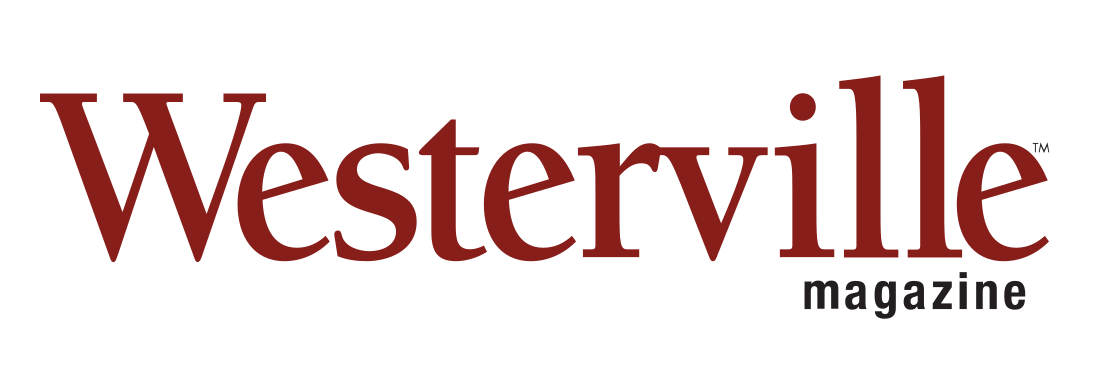
City of Dublin
Hop on Interstate 270 at the U.S. Route 33 interchange and head east toward Sawmill Road. You can’t miss the prestigious international headquarters, the signs directing you to the PGA Tour’s Memorial Tournament and the other obvious indicators of a thriving, prosperous community.
The Dublin of today sits in stark contrast to the tiny, rural village of just 40 years ago, population: 681. It is estimated that now, more than 44,000 people call Dublin home.
Most people familiar with Dublin’s history point to three seminal moments resulting in explosive growth that catapulted the village to a city by 1987: the construction of I-270, Ashland Inc.’s decision to locate Ashland Chemical’s headquarters here and the development of Muirfield Village Golf Club and residential community by Jack Nicklaus.
Related: A Tale of Two City Leaders
“I think 270 made the biggest difference,” says Margie Amorose, executive director of the Dublin Chamber of Commerce. “I think when 270 came, it opened up to a lot of things.”
Former Mayor Jack Frambes says he believes Muirfield Village was the critical game-changer. He says it brought Dublin fame because of the Memorial Tournament.
It’s a tough call, they both agree, because Ashland most likely wouldn’t have chosen Dublin if not for the outerbelt and the ability to tap into Columbus’ water and sewer lines. Nicklaus is said to have played a critical role in helping to negotiate water and sewer agreements with then-Columbus Mayor M.E. Sensenbrenner in the late 1960s. Of course, Ashland paved the way for many other businesses to build in Dublin.
“I think (Ashland) first found us because of the outerbelt and access, and they contacted us because we were lobbying for businesses,” says Frambes, who was mayor from 1966 to 1971. He says Dublin was making it known through organizations like the Franklin County Mayors Association that the village was interested in working with companies. He believes Dublin was chosen over other communities with I-270 access because of its prime spot on the Scioto River.
“We just had the raw material,” he says. “When you get big businesses like that, people look and say, ‘Well, how about us,’ and follow suit.”
With the arrival of Ashland Chemical, now Ashland Inc., as Dublin’s first corporate headquarters, Dublin was now on the map. A headline on the front page of the Business & Finance section of the Sunday, Sept. 21, 1969 Columbus Dispatch proclaimed “$15 Million Ashland Chemical Co. Complex Will be ‘Showplace.’”
Ashland’s first employee went to work in July 1971. The completion of the building was a milestone for Dublin.
“Ashland set the development standard for commercial for Dublin,” Amorose says.
Ashland saw to it that certain amenities would be part of its research and administrative complex. Amorose recalls the building included a restaurant, barbershop and check-cashing window. She says the services were added to attract employees.
“(At the time) La Scala was the only restaurant, and it wasn’t close to Ashland,” she says. “Frantz Road hadn’t been extended. Dublin was still a rural farming community.”
She says the only traffic light was the one at Riverside Drive and State Route 161, which often was a flashing light.
In a 1970 interview, Frambes told a local newspaper that, after landing Ashland and Midwestern Volkswagen, he expected the town “to boom with the opening of the outerbelt.”
“The biggest challenge of being mayor is getting the village ready to become a city,” he said in the interview. It would be 17 years later before Dublin reached a population of more than 5,000, which denoted city status.
Amorose credits former village leaders Joe Dixon, Bob Karrer and Frambes with helping to shape the growing community.
“They weren’t trying to establish a legacy,” she says. “They were trying to make Dublin the best place it could be.”
In fact, Frambes says they didn’t have a vision of what could be.
“It’s amazing how it came together,” he says. “I don’t think anybody would think Dublin would look like it does.”
Nicklaus had been interested in the community since inspecting a site in June 1966 that would eventually become his Muirfield Village development. Longtime development attorney Ben W. Hale Jr. of Smith and Hale LLC remembers that Nicklaus and his father, Charlie, used to hunt on the land and knew the people who owned the farm.
“He had walked those valleys,” Hale says, “It really and truly was, by far, the best piece of ground in Franklin County to build a golf course on.”
As part of the plan for Muirfield Village, a financial consulting firm recommended adding a housing component to the golf course, according to Dublin’s Journey, the history book published by the City in 2004.
Hale remembers the meeting with Sensenbrenner to discuss bringing Columbus water and sewer lines from the east side of the Scioto River to Muirfield. The meeting was held at the Columbus Club at Third and Broad streets.
“We told him what we wanted to do,” Hale says. “He looked at Jack and said, ‘We’ll do it.’”
Hale says the Muirfield Village residential community changed Dublin “in terms of the quality of housing that is there.”
“I think it really helped Dublin as they went forward on the rest of their development because they knew what a really great one looked like,” he says.
Vic Irelan, chairman of the board of Dublin Building Systems, helped with the excavation of the golf course for his company, which was then known as Dodge-Irelan Excavating.
He says it was interesting to watch Nicklaus develop the vision for the championship course.
“He gave us guidelines to fill in this ditch here or that swale,” Irelan says. They took dirt out of the ponds to create the various grades.
He says in some ways, it seemed Nicklaus let the land talk to him and dictate the placement of the tees, fairways and greens.
“I’m sure he probably would say that, too,” Irelan says. “He would actually hit a golf ball off the rough excavation.”
Where the shots landed would determine the layout.
Irelan says it took two years to build the course, from 1972 to 1974. Once the company finished grading the greens, Dodge-Irelan was asked to design and build the pavilion, working with then-General Manager John Hines. Irelan says both Jack and Barbara Nicklaus were intimately involved in the details.
Jack Nicklaus was particularly concerned about the elevation on the floor of the pavilion. “He wanted a person standing on the floor to be able to look over the heads of the people standing next to the ropes” on the 18th hole of the golf course.
“To determine that, we put some people there by the ropes and then got into a high lift – John Hines and myself – and rose up to a point where we were standing over their heads,” Irelan says. The point was measured, “and that’s how we determined the elevation of the floor.”
Irelan’s company, which has been in Dublin since 1962, has since had a hand in the development of the land and buildings of many other signature Dublin projects, including Stanley Steemer, Nestle and Hidaka, and the business helped build the Avery Road and U.S. 33 interchange. Dodge-Irelan also prepared the site for Ashland’s campus.
Irelan says he is pleased with the way the City has developed and the decisions made over the years.
“I think they’ve done an outstanding job,” he says of City Councils and administrations past and present.
And now, Dublin is at the cusp of a new era of transformation with transportation projects such as Emerald Parkway and the 270-33 interchange and learning centers including Ohio University’s Heritage College of Osteopathic Medicine and a new Columbus Metropolitan Library – Dublin Branch in Historic Dublin.
“Dublin is absolutely on the right track. The thing that’s hard is that there are always naysayers out there. It’s easy to say no – because when you say no, nothing happens … you’re always right. The courage comes when you say yes because things are then going to happen,” says Hale.
Former Mayor Joel Campbell says that Dublin has done an effective job of managing change over the last 40 years.
“Anytime you are making any change, you are going to have differences of opinion. Sometimes over the years, we had decisions we had to make that were difficult. One of the things that comes to mind for me is Emerald Parkway. Today, I think everybody recognizes that Emerald Parkways is a very good thing for the City. But in the early years, it was not automatic that it was universally accepted,” Campbell says.
“Change is a good thing. Things change. Economies change. Demographics change. And each one of those things will have an impact on the future of the City,” Campbell says. He believes Dublin has always been a leader in decision making and is proud that other communities over the years have followed Dublin’s lead.
“Not all those decisions were easy. We made sometimes hard calls, sometimes easy calls, but all of them were well informed calls,” he says. “And I think that’s what we’ll see moving forward in the City of Dublin.”






